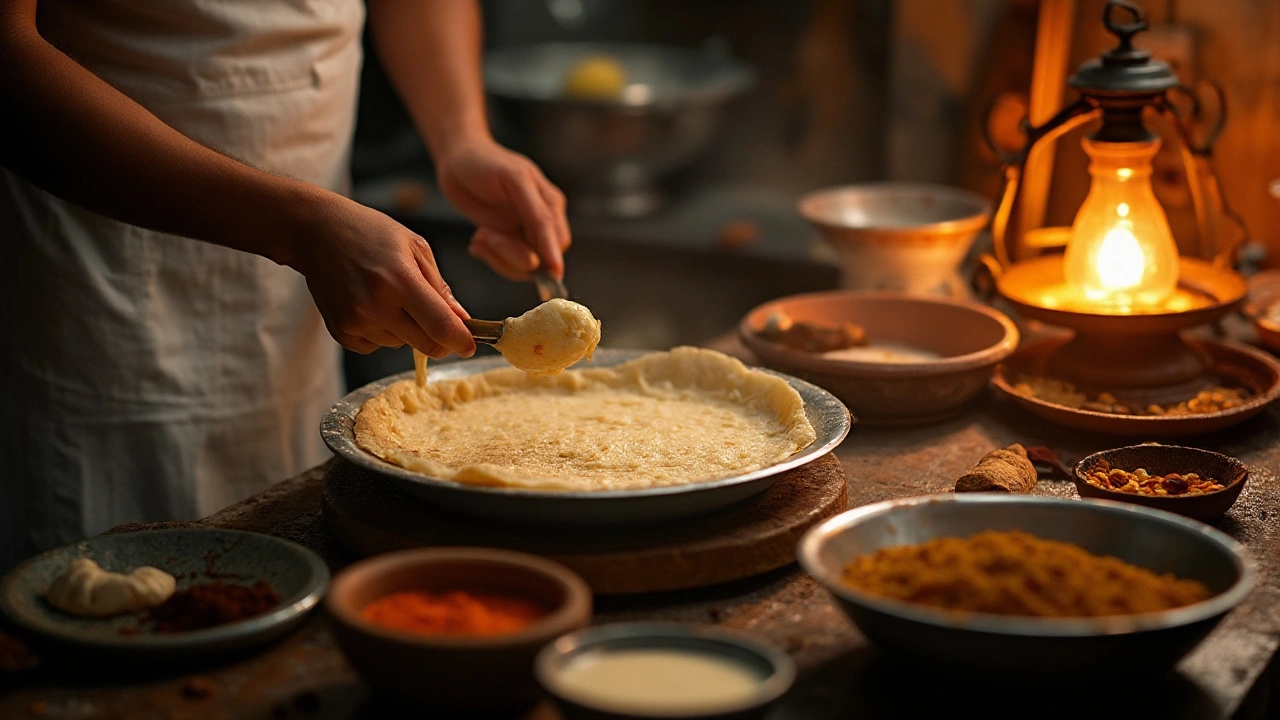Rice Ratio: Mastering Water‑to‑Rice Proportions for Perfect Indian Dishes
When cooking Indian staples, getting the Rice Ratio, the exact amount of water needed for a given quantity of rice, crucial for texture and flavorwater‑rice ratio right can be the difference between fluffy biryani and soggy mush. It’s not just a math problem; it’s a cooking habit that shapes the outcome of dishes like Biryani, layered rice‑and‑meat masterpiece known for its aromatic layers, the everyday Roti, flatbread that pairs with every curry, and even the comforting Dal, lentil stew that often sits on a bed of rice. Understanding how water interacts with grain, how soaking changes absorption, and how heat level controls evaporation lets you tune the ratio for any recipe.
Why the Right Ratio Matters
The rice ratio determines three core outcomes: fluffiness, bite‑size firmness, and flavor carry‑over. A common semantic triple is: Rice ratio influences biryani texture. If you use too much water, the grains fuse and lose their individual sparkle; too little, and they stay hard in the center. Soak time adds another layer: Soaking reduces needed water because the grains pre‑absorb moisture. This is why many South Indian families soak basmati for 30 minutes before a dum biryani – the water‑to‑rice proportion drops from the usual 2:1 to about 1.5:1.
Another triple: Proper rice ratio requires accurate heat control. Start with a vigorous boil, then lower to a gentle simmer; the steam that stays trapped inside the pot finishes cooking without extra water. For everyday plain rice, the classic 2:1 ratio works if you keep the lid tight and the flame low. For pilaf‑style dishes, you might begin with sautéed onions and spices, then add a slightly reduced amount of water to let the aromatics infuse the grains.
Cooking tools also enter the picture. A heavy‑bottomed pot or an electric rice cooker provides even heat distribution, which in turn helps maintain the intended rice ratio. In a thin‑walled pan, heat spikes cause rapid evaporation, forcing you to add more water mid‑cook – a hassle you can avoid by choosing the right vessel.
Seasoning timing is another subtle relationship: adding salt or acid (like lemon juice) before the rice absorbs water can slightly increase the water requirement because those ingredients affect grain swelling. That’s why the popular article “Why Add Lemon to Biryani?” notes that a squeeze of lemon after cooking is safer than mixing it in the water.
Beyond biryani, the rice ratio also guides the preparation of side dishes. For a fluffy pulao, many cooks use the "1 cup rice, 1.5 cups water" rule and then toss in peas, carrots, and whole spices. For a creamy khichdi, a higher water ratio (about 3:1) creates a soupy consistency while still keeping the rice grains distinct.
So how do you apply these ideas in real kitchens? Start by measuring your rice with a standard cup, then follow the suggested ratio for the dish type. Adjust for altitude – higher elevations need a bit more water – and for the age of the rice; older grains tend to be drier and absorb water more slowly. Finally, let the cooked rice rest, covered, for five minutes; the residual steam finishes the job and prevents the grains from sticking together.
Below you’ll find a curated set of articles that dive deeper into each aspect of the rice ratio: from classic biryani techniques to quick fixes for roti dough, from dal soaking myths to lemon’s role in fluffy rice. Whether you’re a beginner looking for fool‑proof steps or an experienced cook seeking fine‑tuning tricks, the posts ahead cover the full spectrum of Indian rice cooking.

Mastering the Perfect Urad Dal and Rice Ratio for Dosa Batter
Creating the perfect dosa requires understanding the ideal ratio of urad dal to rice, a key element in this iconic South Indian dish. Delve into the nuances of dosa-making, explore cultural significance, and uncover beneficial techniques. This article also highlights common mistakes to avoid and includes tips for experimentation. Join us as we unfold the secrets to achieving that perfect crispy, golden dosa.